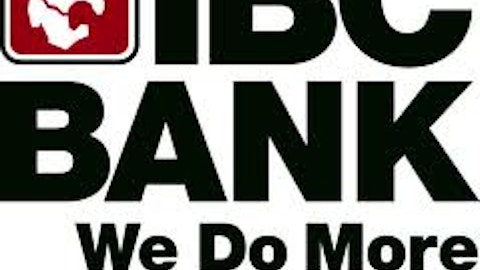Is BancFirst Corporation (NASDAQ:BANF) a good stock to buy? BANF is an Oklahoma bank holding company with $6.5 billion in assets and 100 service locations in 52 communities in Oklahoma. After rallying from $30 a share in 2009 to $68.80 a share in 2014, the stock has been consolidating for over a year.
Although Cushing is a major energy storage site, Oklahoma’s economy is not as exposed to the oil and gas industry as Texas and North Dakota are. Oklahoma’ unemployment rate was 4.1% in April versus the nationwide average of over 5.4%. Oklahoma housing prices are also healthy. According to Zillow, Oklahoma home prices are at an all-time high, having increased 3.6% over the last twelve months. Rising real estate values and a strong Oklahoma economy are good for BancFirst, as a strong economy drives loan demand and decreases charge offs. BancFirst itself has limited exposure to the oil and gas sector, with oil and gas loans making up just 3% of the bank’s total loan portfolio.
BancFirst Corporation (NASDAQ:BANF) has steadily increased EPS over the decade, with EPS rising from $2.09 per share in 2009 to $4.13 in the trailing twelve months. BancFirst continued its streak of strong earnings growth in Q2, with the bank reporting 2Q EPS of $1.17 on revenues of $74.93 million. EPS increased 27% year over year and 13% sequentially. Tangible book value increased 9.5% year over year while total loans rose 5.6% year over year. BancFirst’s efficiency ratio improved from 65.7 to 60.63 year over year. Nonperforming and restructured assets was 0.87% of total assets.
Due to BancFirst shares’ illiquidity, only a few hedge funds own Bancfirst. Of the hedge funds that do own BancFirst, the funds have been modestly bearish. Of BancFirst’s 5 hedge fund holders from the fourth quarter, one hedge fund completely exited its position, two decreased their positions, one hedge fund kept its position the same, and one hedge fund added shares modestly. According to SEC filings, PDT Partners was the hedge fund that sold out its position. Nine Chapters Capital Management decreased its position by 15% to 4,000 shares and Millennium Management decreased its position by 26% to 48,264 shares. Forest Hill Capital kept its shares the same at 313,172 shares. Quant fund Renaissance Technologies was the only fund that increased its holding. The fund increased its holdings by 8% to 55,700 shares, worth almost $3.4 million at the end of March.
Our research shows that the 15 most popular small-cap stocks among hedge funds have outperformed the market by nearly a percentage point per month between 1999 and 2012. We have been forward testing the performance of these stock picks since the end of August 2012, and they managed to return more than 144% over the ensuing 2.5+ years and outperformed the S&P 500 Index by over 84 percentage points (read the details here).
Hedge funds have been modestly bearish because BancFirst trades at a higher valuation than its peers. With a price to tangible book ratio of 1.76, BancFirst trades at a higher price to tangible book ratio than the peer average of 1.4. With a forward PE of 15.60, BancFirst also trades at a higher forward PE than the peer average of 13. Because shares are a bit pricey, BancFirst’s stock might consolidate for another several quarters before rallying.
In the long run, BancFirst Corporation (NASDAQ:BANF) will be a good holding. The bank earns nice returns on capital, with a ROE of 10.9% and a ROA of 1%. BancFirst’s insiders and management also own half the bank. Because of the strong insider ownership, management will always do what’s best for the shareholder, meaning that BancFirst shares have a strong probability of outperforming its peers over time.
Disclosure: None
